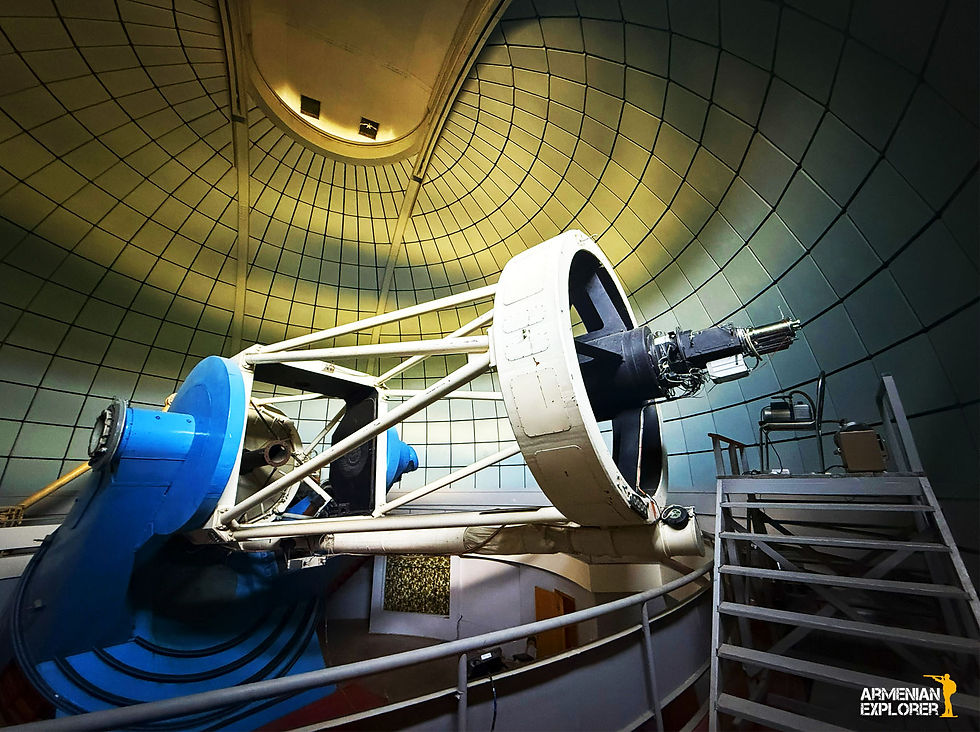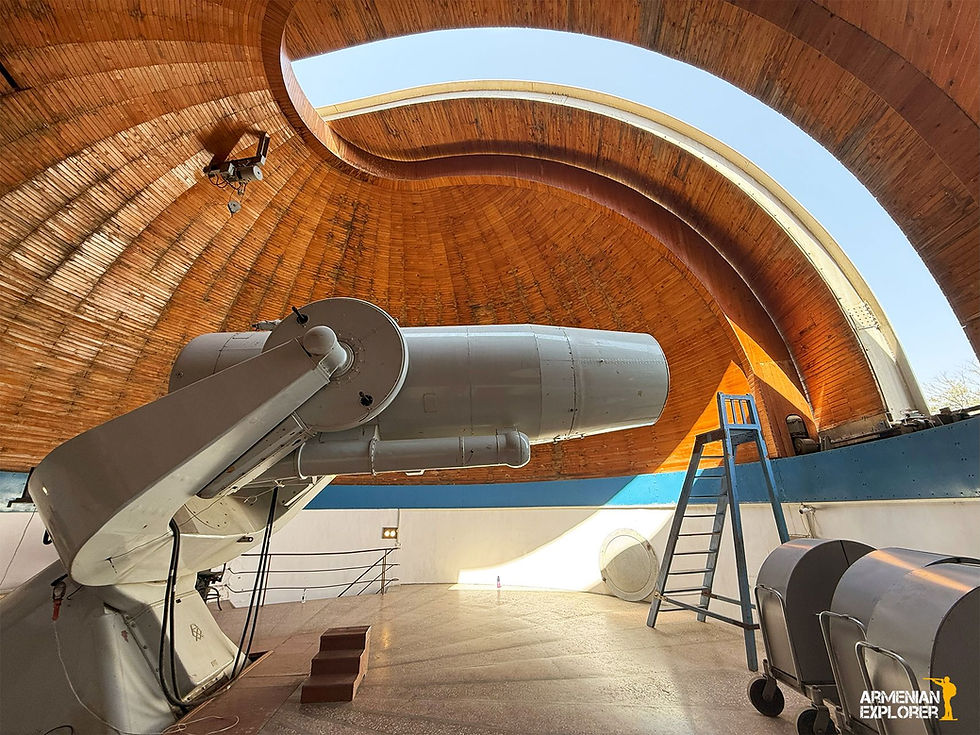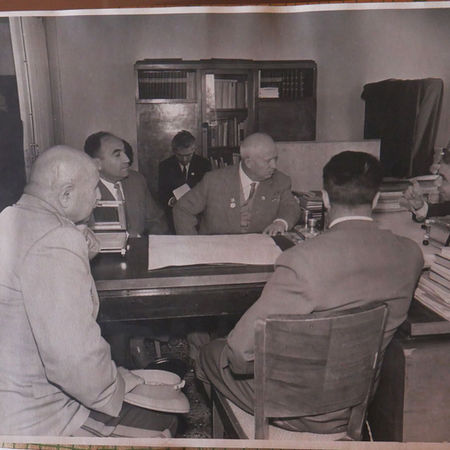

Byurakan Astrophysical Observatory
Nestled amidst the rugged beauty of Armenia's Aragatsotn region, where snow-capped peaks seemingly pierce the heavens, lies a gem of astronomical exploration: the Byurakan Astrophysical Observatory. This article offers brief insights for those eager to delve into the observatory's wonders or planning an upcoming visit.
Perched at an altitude of 1500 meters, just 50 km north of Yerevan, Byurakan benefits from crystal-clear skies and minimal light pollution, providing an unparalleled vantage point for cosmic scrutiny. This unique setting played a pivotal role in the establishment of an observatory here!
Founded in 1946 by Viktor Hambardzumyan, the Byurakan Astrophysical Observatory, or simply Byurakan Observatory, is situated in the village of Byurakan.

Spring in Byurakan Astrophysical Observatory! The ZTA-2.6 telescope is the largest observational instrument of BAO. The building was designed by Sargis Gurzadyan, 1975
Viktor Hambardzumyan was a Soviet-Armenian astrophysicist and science administrator, one of the 20th century's top astronomers, he is widely regarded as the founder of theoretical astrophysics in the Soviet Union.The architectural brilliance of the buildings was orchestrated by Samvel Safarian. The observatory encompasses two main sections: a residential area and an operational segment, featuring observation towers, administrative and laboratory buildings, an assembly hall, and a guest house.

The ZTA-2.6 telescope was constructed at LOMO (Leningrad Optical-Mechanical Association, St. Petersburg, Russia) and is essentially a twin of the G. A. Shain reflector mounted at CrAO.
Below is a list of telescopes at the Byurakan Astrophysical Observatory.
ZTA-2.6: The 2.6-meter Cassegrain reflector in operation since 1975.
103/136/213 cm Schmidt system telescope, in operation since 1960.
53/53/180 cm Schmidt binoculars.
Small telescopes:
50 cm reflector.
40 cm reflector.
20 cm reflector.
Radio-optical telescope: PDS-1010A, a microdensitometer for measuring density.
The First Byurakan Survey, initiated in 1965 using the Schmidt telescope, unveiled 1500 galaxies with ultraviolet excess, famously known as the Markarian galaxies. These celestial bodies are designated "Markarian" or "Mrk," followed by a number, such as Mrk 501. The Byurakan spectral survey of Markarian's sky has earned its place in the international register of the UNESCO Memory of the World program.

The 1-meter Schmidt telescope in Byurakan observatory
The Second Byurakan Survey, conducted from 1974 to 1991, focused on identifying emission line and ultraviolet excess galaxies, along with quasars.
The observatory boasts numerous discoveries, including special star clusters (stellar associations since 1947), over 1,000 flare stars, dozens of supernovae, hundreds of Herbig–Haro objects and cometary nebulae, as well as hundreds of galaxies.

Inside Viktor Hambardzumyan's house-museum!
Notably, Hambardzumyan's house-museum is also situated within the grounds of the Byurakan Observatory, providing a glimpse into the life and work of this influential figure in Armenian astronomy.
Check out this article as well to learn about the Trophy 1m Schmidt Telescope, which was Hitler's gift to Mussolini and is located at the Byurakan Astrophysical Observatory.
Լուսանկարներ






















